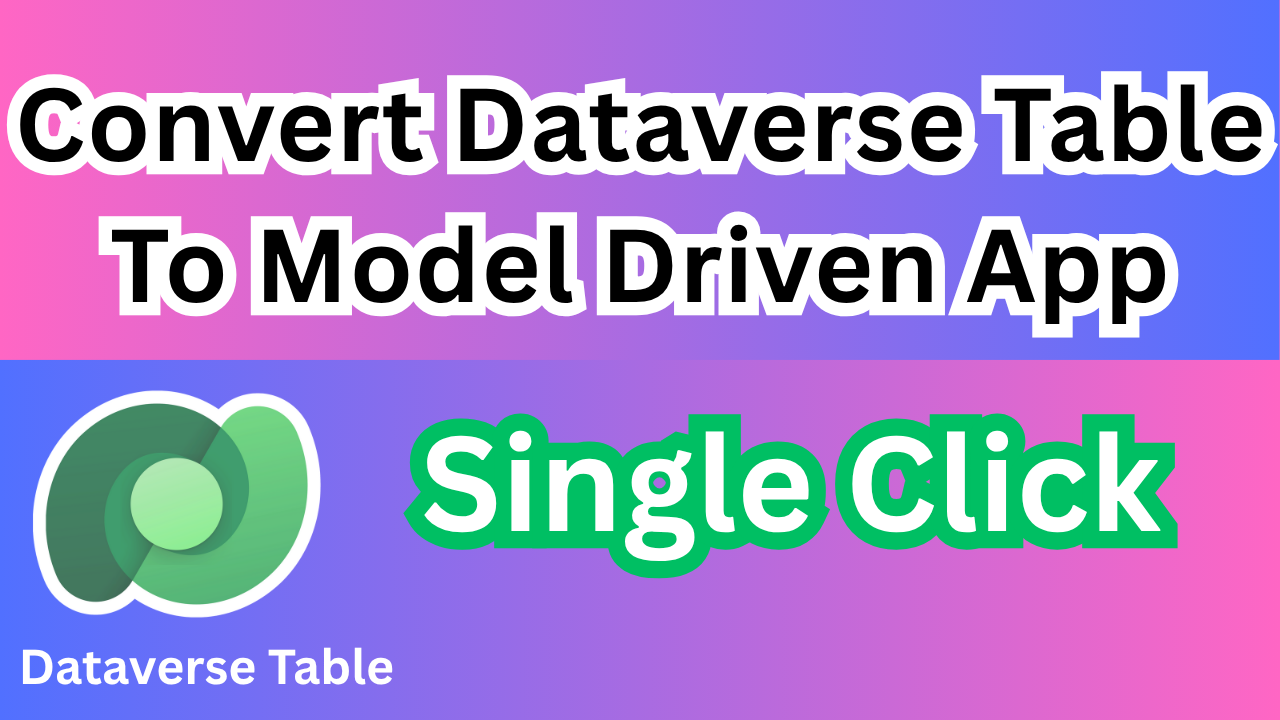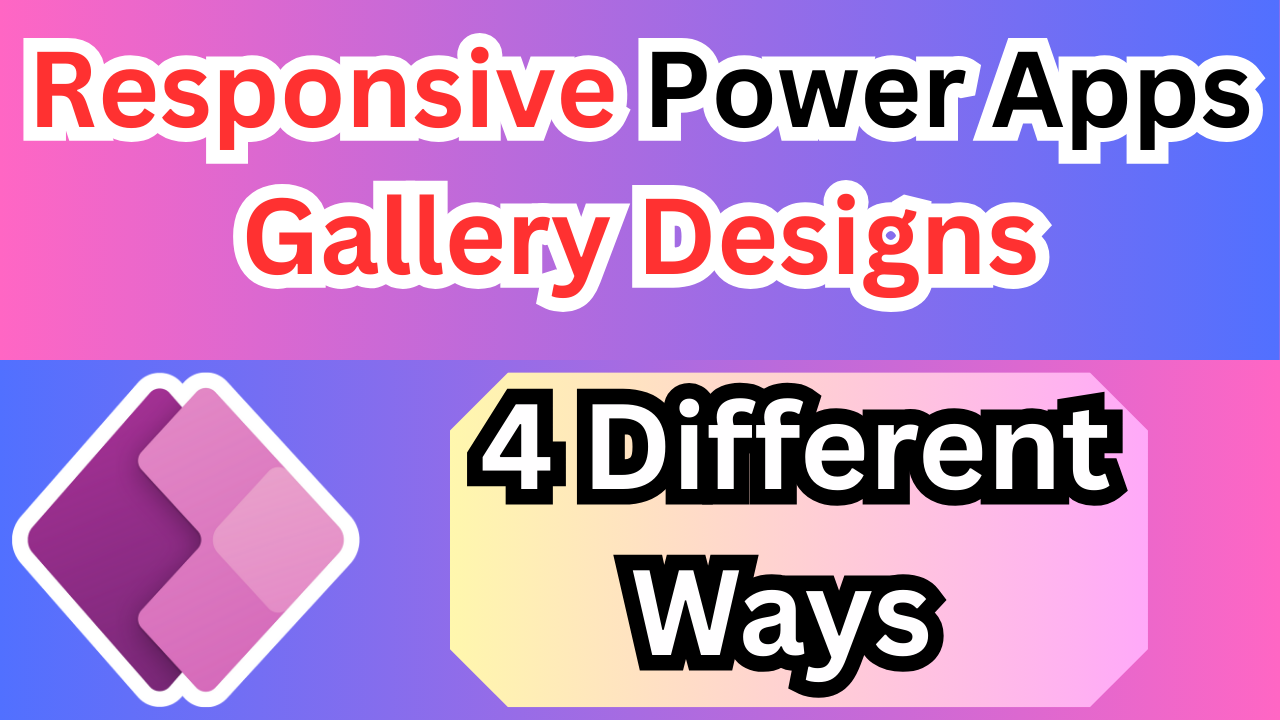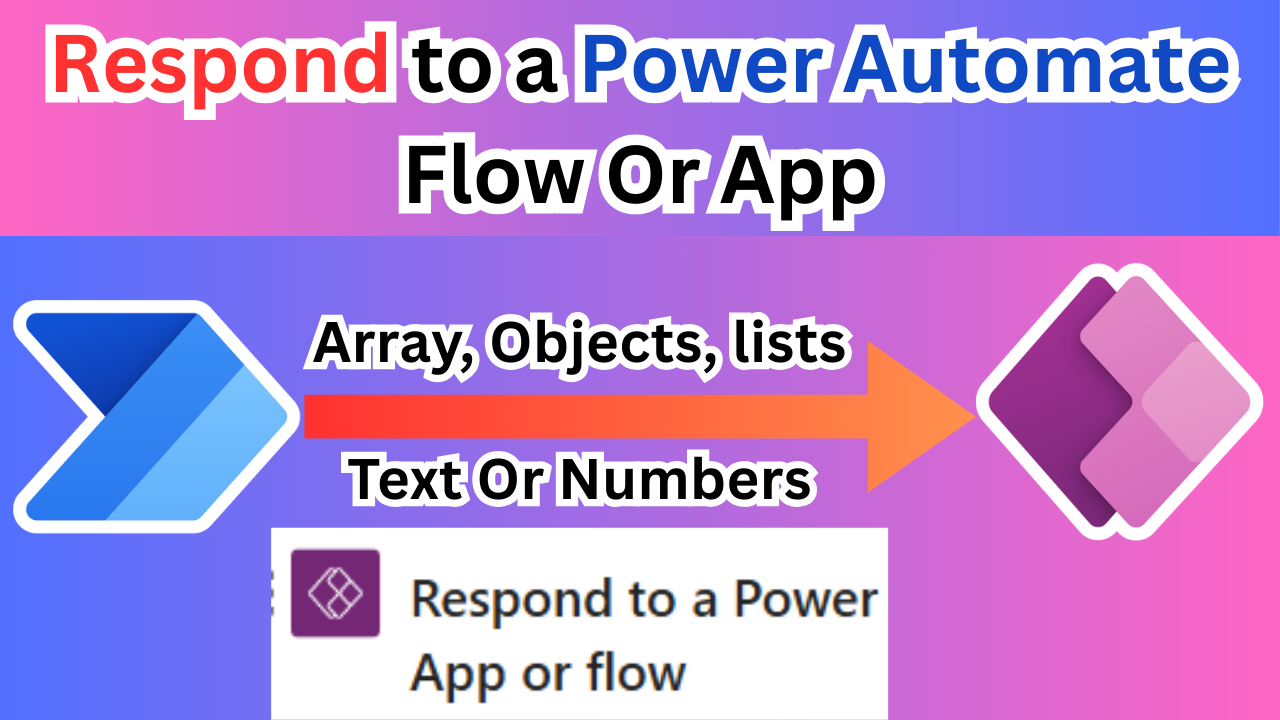Checking Data Source Permissions in Power Apps
Checking Data Source Permissions in Power Apps
Understanding DataSourceInfo Function
Power Apps provides the DataSourceInfo function, which retrieves metadata about a data source, including user permissions. This function allows developers to check whether a user has permission to perform certain actions, such as creating, editing, deleting, or reading records.
Syntax
DataSourceInfo( DataSource, Information [, ColumnName] )- DataSource: The data source to check permissions for.
- Information: The type of information to retrieve (e.g.,
DataSourceInfo.ReadPermission). - ColumnName (Optional): The specific column for which to retrieve information.
Permission Types
The DataSourceInfo function can check the following permissions:
| Information Argument | Description |
|---|---|
DataSourceInfo.ReadPermission | Checks if the user can read records. |
DataSourceInfo.CreatePermission | Checks if the user can create records. |
DataSourceInfo.EditPermission | Checks if the user can edit records. |
DataSourceInfo.DeletePermission | Checks if the user can delete records. |
Implementing Permission Checks
Checking Read Permissions
Using the Checking Data Source Permissions in Power Apps feature, it becomes easier to manage user roles efficiently.
To verify if a user has read access to a table:
Checking Data Source Permissions in Power Apps allows for a clear understanding of what actions users can take on specific datasets.
If( DataSourceInfo(MyTable, DataSourceInfo.ReadPermission),
Notify("You have read access.", NotificationType.Success),
Notify("You do not have read access.", NotificationType.Error)
)With Checking Data Source Permissions in Power Apps, you can tailor user experiences based on their access rights.
Checking Create Permissions
Ultimately, this guide on Checking Data Source Permissions in Power Apps will demonstrate how to optimize user interactions.
Before allowing a user to create a new record:
In the context of Checking Data Source Permissions in Power Apps, understanding user roles is vital for app development.
So, let’s dive into the details of Checking Data Source Permissions in Power Apps for a deeper understanding.
If( DataSourceInfo(MyTable, DataSourceInfo.CreatePermission),
Patch(MyTable, Defaults(MyTable), {Column1: "Value"}),
Notify("You do not have permission to create records.", NotificationType.Error)
)Checking Edit Permissions
To ensure a user can edit records before modifying them:
In conclusion, by Checking Data Source Permissions in Power Apps, you can ensure data security and user compliance.
If( DataSourceInfo(MyTable, DataSourceInfo.EditPermission),
Patch(MyTable, LookUp(MyTable, ID=1), {Column1: "Updated Value"}),
Notify("You do not have permission to edit records.", NotificationType.Error)
)Checking Delete Permissions
Before allowing a user to delete a record:
If( DataSourceInfo(MyTable, DataSourceInfo.DeletePermission),
Remove(MyTable, LookUp(MyTable, ID=1)),
Notify("You do not have permission to delete records.", NotificationType.Error)
)Enhancing User Experience with Permissions Checks
To improve the user experience, you can dynamically enable or disable buttons based on user permissions:
ButtonEdit.DisplayMode = If(DataSourceInfo(MyTable, DataSourceInfo.EditPermission), DisplayMode.Edit, DisplayMode.Disabled)
ButtonDelete.DisplayMode = If(DataSourceInfo(MyTable, DataSourceInfo.DeletePermission), DisplayMode.Edit, DisplayMode.Disabled)This ensures that users only see the options they are allowed to perform, reducing errors and frustration.
Limitations and Considerations
- The
DataSourceInfofunction returnstrueif it cannot determine the user’s permission. The actual permission check happens on the server when the operation is executed. - Currently,
DataSourceInfois only supported in Microsoft Dataverse. Other data sources, such as SharePoint and SQL, may not fully support this function.
Checking Data Source Permissions in Power Apps: An In-Depth Guide
Introduction
When building apps with Power Apps, ensuring that users only perform actions they are allowed to is crucial for both security and usability. Whether it’s viewing data, adding new records, editing existing ones, or deleting them, you need a reliable way to check user permissions. This article explains how to use the built-in DataSourceInfo function in Power Apps to verify permissions. We also include a detailed code example that displays these permissions in a user-friendly interface.
Understanding the DataSourceInfo Function
Power Apps provides the DataSourceInfo function, which allows you to retrieve metadata about a data source. This metadata includes the permissions for reading, creating, editing, and deleting records. The basic syntax is:
DataSourceInfo(DataSource, Information [, ColumnName])
Checking Data Source Permissions in Power Apps is essential for maintaining security and ensuring users have appropriate access levels.
To fully understand the implications of Checking Data Source Permissions in Power Apps, we need to explore the core functionalities and features.
This guide focuses on Checking Data Source Permissions in Power Apps to help you build secure applications.
- DataSource: The table or data source you are checking.
- Information: The type of information you need (e.g.,
DataSourceInfo.ReadPermission). - ColumnName (Optional): Used when you want details about a specific column.
By Checking Data Source Permissions in Power Apps, developers can enhance their applications’ security and user experience.
Permission Types
The most common permission checks include:
Implementing checking for Data Source Permissions in Power Apps is crucial when determining how data can be accessed.
- ReadPermission: Can the user view records?
- CreatePermission: Can the user add new records?
- EditPermission: Can the user modify existing records?
- DeletePermission: Can the user remove records?
Using these checks before executing actions not only prevents errors but also reinforces security by ensuring only authorized users perform sensitive operations.
Detailed Code Walkthrough
Continuously Checking Data Source Permissions in Power Apps is essential for maintaining data integrity within your applications.
Below is a sample YAML code snippet that sets up a screen to display permission information for an Accounts data source. This example combines a simple permission check with a user-friendly interface that includes a gallery, header, and buttons for syncing and refreshing data.
Screens:
Screen1:
Properties:
OnVisible: |+
=ClearCollect(
coldatainfo,
{
'Permission Type': "Create Permission",
Permission: DataSourceInfo(
Accounts,
DataSourceInfo.CreatePermission
)
},
{
'Permission Type': "Edit Permission",
Permission: DataSourceInfo(
Accounts,
DataSourceInfo.EditPermission
)
},
{
'Permission Type': "Delete Permission",
Permission: DataSourceInfo(
Accounts,
DataSourceInfo.DeletePermission
)
},
{
'Permission Type': "Read Permission",
Permission: DataSourceInfo(
Accounts,
DataSourceInfo.ReadPermission
)
}
);
Children:
- Gallery1:
Control: Gallery@2.15.0
Variant: BrowseLayout_Vertical_TwoTextVariant_ver5.0
Properties:
Height: =555
Items: =coldatainfo
Width: =487
X: =40
Y: =213
Children:
- Title2:
Control: Label@2.5.1
Properties:
FontWeight: =If(ThisItem.IsSelected, FontWeight.Semibold, FontWeight.Normal)
Height: =Self.Size * 1.8
OnSelect: =Select(Parent)
PaddingBottom: =0
PaddingLeft: =0
PaddingRight: =0
PaddingTop: =0
Text: =ThisItem.'Permission Type'
VerticalAlign: =VerticalAlign.Top
Width: =Parent.TemplateWidth - 86
X: =16
Y: =(Parent.TemplateHeight - (Self.Size * 1.8 + Subtitle2.Size * 1.8)) / 2
- Subtitle2:
Control: Label@2.5.1
Properties:
FontWeight: =If(ThisItem.IsSelected, FontWeight.Semibold, FontWeight.Normal)
Height: =Self.Size * 1.8
OnSelect: =Select(Parent)
PaddingBottom: =0
PaddingLeft: =0
PaddingRight: =0
PaddingTop: =0
Text: =ThisItem.Permission
VerticalAlign: =VerticalAlign.Top
Width: =Title2.Width
X: =Title2.X
Y: =Title2.Y + Title2.Height
- NextArrow2:
Control: Classic/Icon@2.5.0
Properties:
AccessibleLabel: =Self.Tooltip
Color: =RGBA(166, 166, 166, 1)
Height: =50
Icon: =Icon.ChevronRight
OnSelect: =Select(Parent)
PaddingBottom: =16
PaddingLeft: =16
PaddingRight: =16
PaddingTop: =16
Tooltip: ="View item details"
Width: =50
X: =Parent.TemplateWidth - Self.Width - 12
Y: =(Parent.TemplateHeight / 2) - (Self.Height / 2)
- Separator2:
Control: Rectangle@2.3.0
Properties:
Fill: =RGBA(255, 255, 255, 1)
Height: =8
OnSelect: =Select(Parent)
Width: =Parent.TemplateWidth
Y: =Parent.TemplateHeight - Self.Height
- Rectangle2:
Control: Rectangle@2.3.0
Properties:
Height: =Parent.TemplateHeight - Separator2.Height
OnSelect: =Select(Parent)
Visible: =ThisItem.IsSelected
Width: =4
- Header1:
Control: Header@0.0.42
Properties:
IsLogoVisible: =false
Title: ="Data Source Permission Viewer App"
Y: =40
- ButtonCanvas2:
Control: Button@0.0.44
Properties:
Icon: ="ArrowClockwise"
OnSelect: |
=ClearCollect(
coldatainfo,
{
'Permission Type': "Create Permission",
Permission: DataSourceInfo(
Accounts,
DataSourceInfo.CreatePermission
)
},
{
'Permission Type': "Edit Permission",
Permission: DataSourceInfo(
Accounts,
DataSourceInfo.EditPermission
)
},
{
'Permission Type': "Delete Permission",
Permission: DataSourceInfo(
Accounts,
DataSourceInfo.DeletePermission
)
},
{
'Permission Type': "Read Permission",
Permission: DataSourceInfo(
Accounts,
DataSourceInfo.ReadPermission
)
}
);
Text: ="Sync"
Width: =139
X: =55
Y: =139
- ButtonCanvas3:
Control: Button@0.0.44
Properties:
Icon: ="ArrowReset"
OnSelect: =Refresh(Accounts)
Text: ="Refresh"
X: =215
Y: =139
- Label1:
Control: Label@2.5.1
Properties:
Text: ="Table"
X: =106
Y: =189
What Does This Code Do?
- Screen Initialization
- The OnVisible property for Screen1 uses
ClearCollectto create a collection calledcoldatainfo. This collection stores four records, each containing a permission type (Create, Edit, Delete, Read) along with the corresponding permission status obtained via DataSourceInfo.
- The OnVisible property for Screen1 uses
- Displaying Permissions with a Gallery
- A gallery (Gallery1) is used to show each permission type along with its status (true or false).
- Title2 and Subtitle2 labels display the permission type and its value, respectively.
- Icons and separators are added for a clear and organized display.
- User Interface Components
- Header1 provides a title at the top of the screen, indicating that the app is a “Data Source Permission Viewer App.”
- ButtonCanvas2 (Sync Button) refreshes the permission collection when clicked, ensuring that the app always displays current permission settings.
- ButtonCanvas3 (Refresh Button) refreshes the Accounts data source directly.
- Label1 simply shows the text “Table” as a visual cue for the data source being referenced.
Implementing Permission Checks in Your App
Using the DataSourceInfo function in this way allows you to:
- Dynamically display permissions: The gallery updates to show if the user has permissions to create, edit, delete, or read records.
- Enhance user experience: By enabling or disabling certain buttons (e.g., disabling the Edit button if the user does not have edit permissions), you help users understand what actions they can perform.
- Keep your app secure: Permissions are checked before any operation is attempted, reducing the risk of unauthorized data changes.
Step-by-Step Process
- Collect Permission Data:
UseClearCollecton screen load (or when needed) to store the results of the DataSourceInfo checks in a collection. - Display Permission Data:
Bind the collection to a gallery to provide users with a visual representation of their permissions. - Refresh Data:
Provide a sync button that rechecks permissions and a refresh button to update the data source, ensuring that the displayed information is always current. - Provide Feedback:
Use labels and notifications to inform users of their permission status and guide them accordingly.
Conclusion
Combining the power of the DataSourceInfo function with a clear, user-friendly interface helps you build secure and responsive Power Apps. By checking permissions for reading, creating, editing, and deleting records, you can prevent unauthorized actions and improve the overall user experience. The example code provided above demonstrates a complete solution—from collecting permission data to displaying it dynamically in a gallery. Use this guide as a foundation to further customize your app and meet your specific requirements.
Checking Data Source Permissions in Power Apps
Checking Data Source Permissions in Power Apps
Checking Data Source Permissions in Power Apps
Checking Data Source Permissions in Power Apps
✨ Thanks for reading! ✨
I hope you found this blog on the Microsoft Power Platform helpful! From Power Apps, Power Automate (Cloud & Desktop), Canvas Apps, Model-driven Apps, Power BI, Power Pages, SharePoint, Dynamics 365 (D365), Azure, and more, I cover a wide range of topics to help you harness these powerful tools. Don’t miss out on future tips, tutorials, and insights—hit that subscribe button to get the latest posts right to your inbox. 💌💬 I’d love to hear your thoughts! Drop a comment below with your questions, ideas, or feedback—let’s get the conversation started!🔗 Let’s connect and grow together!
Follow me, Ravindra Jadhav, on your favorite platforms for even more content and updates on Microsoft Power Platform and related technologies:
💼 LinkedIn – Let’s network and share ideas!
💻 GitHub – Explore my projects and code.
🐦 Twitter – Stay updated with quick tips and industry news.
📺 YouTube – Watch tutorials and deep dives on Power Platform, Power Apps, Power Automate, and more! Let’s build something amazing together with Power Platform and Azure! 🚀
Ultimately, Checking Data Source Permissions in Power Apps ensures that users only have access to the data they need.
By regularly Checking Data Source Permissions in Power Apps, you can adapt to changing user needs and access requirements.
We hope this guide on Checking Data Source Permissions in Power Apps has helped you understand its significance.







2 thoughts on “Checking Data Source Permissions in Power Apps 2025”